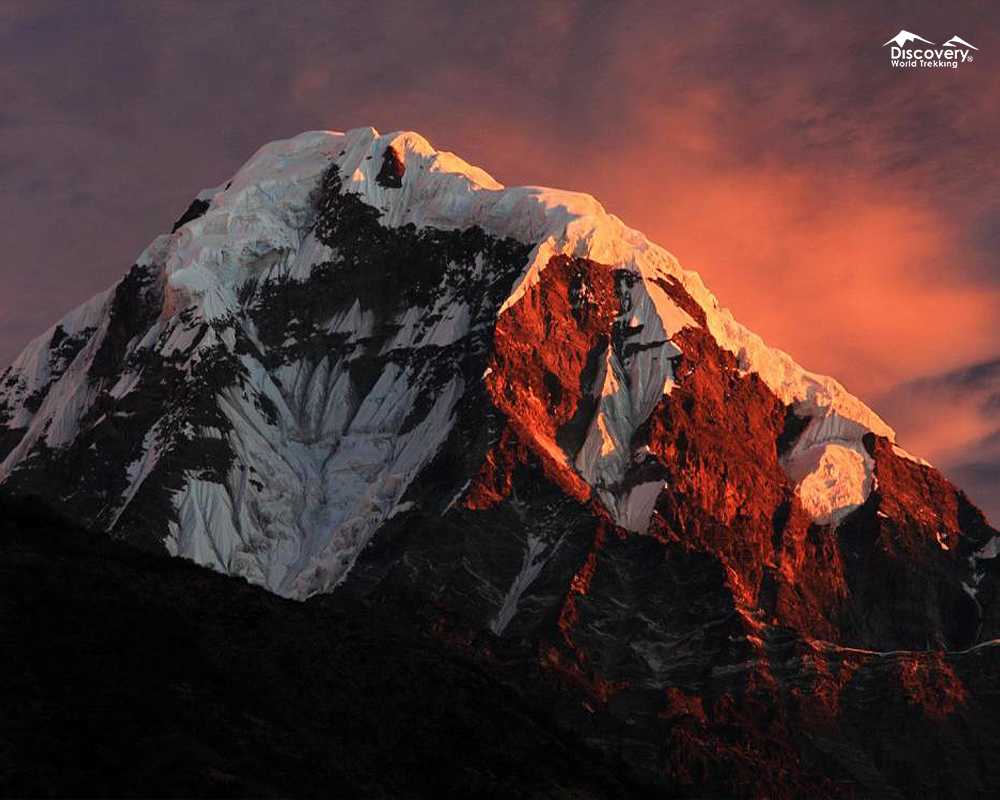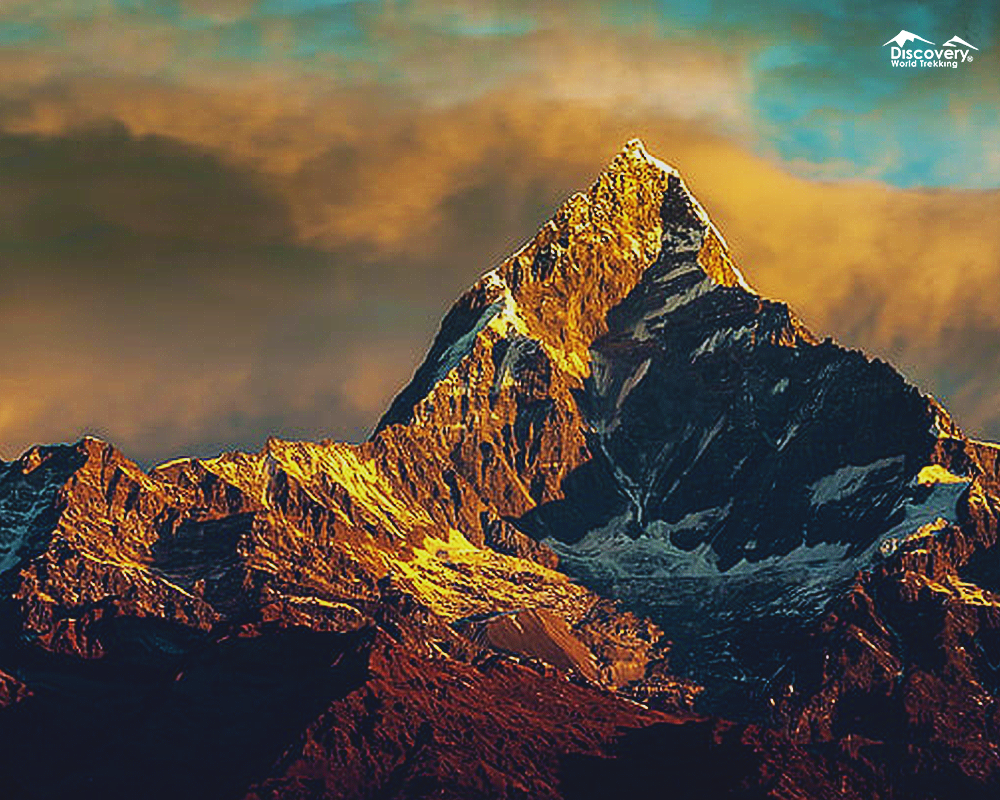Holy Mountains in Nepal: A Journey of Spirituality and Adventure
Nepal is rich in cultural, spiritual, and religious diversity. In fact, every year, thousands of tourists seeking religious and spiritual experiences visit Nepal.
The high mountains are some of the greatest treasures of Nepal, but they also hold a far greater significance- they are considered sacred and holy. In this blog, we'll take a look at some of the most revered mountains in Nepal and learn what makes these mountains special.
Ganesh Himal

This Himal (mountain) takes its name from the Hindu god of luck, Ganesh, the son of Mahadev and Parvati. The Ganesh Himal trek is considered a religious trek by many Hindu pilgrims and trekkers due to its proximity to sacred Hindu sites, such as the sacred lakes - Parvati (Kunda) and Ganesh lakes, and Tripurasundari temple.
It is also believed that the Ganesh Himal trek offers spiritual cleansing and blessings for those who undertake it. The trek provides an opportunity to immerse in the local culture and spirituality, while also offering breathtaking views of the Himalayas.
Suggested trek: https://www.discoveryworldtrekking.com/trips/ganesh-himal-trekking-10-days
Mt. Khumbila
The Khumbu region gets its name from Mount. Khumbila is a mountain revered by the Sherpas. In fact, the Sherpas view Khumbila as their 'Kul Devta" - the god that protects their clan. This site is sacred, and climbing it is forbidden. There are tales of misfortune said to befall those who have tried.
During the local festival of Dumje, the Khumbila deity is believed to descend from his abode to dance in the local monastery. Locals believe Khumbila mountain was a god, subdued and converted to Buddhism by Guru Rimpoche in the 8th century, and that the Guru himself meditated in a cave on the mountain, adding to its spiritual and historical significance.
Khumbila, standing at 5,761m, may not be as tall as nearby mountains such as Everest and Makalu, but its religious importance surpasses them all. Sherpa holy texts state that the region above the tree line of Khumbila is the home of gods, and violating this line can result in the wrath of the gods.
For this region, Khumbila has never been climbed, with one expedition in the 1980s ending in tragedy after an avalanche claimed the lives of all participants. The locals view climbing the summit of Khumbila is like stepping on a god's head.
Recommended trek:
https://www.discoveryworldtrekking.com/trips/everest-view-trek
Mount Everest/ Sagarmatha

Mount Everest has religious significance to both Hindus and Buddhists in Nepal. For many, a visit to Mount Everest is not just a chance to conquer the peak or marvel at its beauty - it is a spiritual journey. In Tibetan Mount Everest is called Chomolungma, which means the Mother Goddess of the World. For Buddhists, the mountain is considered a place of peace and spirituality, and a visit to Sagarmatha is a way to connect with the inner self and seek enlightenment.
In fact, even today, the Sherpas organize a spiritual ceremony (pooja) before attempting to summit Everest. The whole Everest region is decorated with Buddhist flags.
Visitors can experience the spiritual significance of Mount Everest by visiting the nearby monasteries and temples, such as the Tengboche Monastery, which is considered one of the most important Buddhist monasteries in the Solu-Khumbu region. Here, visitors can participate in Buddhist rituals, meet with local lamas, and learn about the spiritual beliefs and practices of the local people.
Recommended trek: https://www.discoveryworldtrekking.com/trips/everest-base-camp-trek
Annapurna Range

The Annapurna Range is a series of peaks in the central region of Nepal and is considered one of the most sacred mountain ranges in the country. The range is named after the Hindu goddess of food and nourishment, Annapurna, and is considered to be her home. The Annapurna Circuit, a popular trekking route, takes trekkers through the range and offers stunning views of its peaks, as well as an opportunity to connect with the local culture and spirituality.
Interspersed within the Annapurna regions, there are several monasteries and other temples. Chief among them is the Muktinath Temple, a holy site for Hindus and Buddhists. Like other high-altitude settlements in Nepal, you can clearly feel the Buddhist influence in higher trek regions within Annapurna regions.
Recommended trek:
https://www.discoveryworldtrekking.com/trips/annapurna-circuit-short-trek
Manaslu Range:

The Manaslu Range is a series of peaks located in the western region of Nepal and is considered one of the most sacred mountain ranges in the country. Manaslu means “mountain of the spirit” and it comes from the word Sanskrit word, Manasa, which means “soul” or “intellect”. The locals living in the Manaslu region believe that a divine being resides in this range.
Local people believe that the holy being who is strong and benevolent resides within this mountain. There are several monasteries you can find around the Manaslu region, including Lungdung Gumba, Sarang Gumba, Rachen Gumba, and Mu Gumba. The influential Buddhist masters, Guru Rinpoche and Jetsun Milarepa are said to have meditated in the vicinity of the Manaslu mountains.
Recommended trek:
https://www.discoveryworldtrekking.com/trips/manaslu-circuit-trek
Machhapuchare

Macchapuchhare (6,993m), nicknamed the "fishtail" due to its distinct shape, is a well-known mountain in central Nepal that stands apart from the Annapurna range. Nepal government has prohibited climbing Machhapuchhare due to religious beliefs.
The ban on ascending Macchapuchhare can be traced back to British Army officer Jimmy Roberts, who contributed immensely to the development of mountaineering in Nepal. Robert attempted an expedition to climb the mountain but stopped 45m short of the peak, after which he requested the Nepal government to ban climbing it. The reason might be his fondness for the local Gurungs, who considered the mountain sacred and were not happy to see foreigners attempting to scale it.
To this day, the ban on climbing Macchapuchhare remains in place, and the mountain is considered a symbol of purity and beauty in Nepal, even appearing in local folk songs.
Recommended trek:
https://www.discoveryworldtrekking.com/trips/annapurna-base-camp-trek
Climbing mountains in Nepal is not just a physical challenge, but also a journey of spirituality and adventure. Many Nepali peaks hold great religious and cultural significance and have been revered and protected by the local communities. Trekking in these regions is also about respecting and appreciating the local cultural and spiritual heritage.
Whether you are a seasoned mountaineer or a curious traveler, if you want a physically and spiritually fulfilling trek, you should try the above-recommended hikes. For hassle-free treks, you can contact us (call/Viber/WhatsApp) at 977-9840055491 or email [email protected].